Russia's MIG-41: Future 6th generation, multi-role, long range fighter- interceptor
Russian designers have begun work on assembling the latest MiG-41 fighter-interceptor.
The Russian state corporation Rostec announced that it has begun work on the construction of the latest domestic fighter-interceptor of the new generation MiG-41. At the moment, it is known that development work is being carried out, which implies the creation of at least a prototype of this combat fighter, which, after a series of tests, can be put into mass production.
It is known that by now the MiG-41 fighter has passed at least 200 different tests, and the initial data, which is publicly available on the public procurement website, makes it possible to judge the high maneuverability of this combat aircraft, thereby revealing a number of its characteristics.
Any timing for the implementation of this project remains unknown, however, experts believe that by 2023 the MiG-41 will make its first flight, after which, towards the end of this decade, it will be put into mass production and will be supplied to the Russian Aerospace Forces.
The MiG-41 is a multi-role fighter aircraft. This supersonic fighter is expected to revolutionize the world of air combat with its Mach 4+ speeds and advanced avionics systems, giving it unmatched agility and maneuverability. With a range of up to 5,000km, the MiG-41 is designed to patrol short- and long-range missions.
The MiG-41's powerful engines are designed to propel the aircraft towards a top speed of Mach 4+, making it one of the fastest combat aircraft in the world. This allows pilots to quickly reach mission targets and evade incoming threats. The advanced avionics systems help to increase agility and flexibility during high-velocity maneuvers and dogfights, allowing pilots to outmaneuver enemy forces even at high speeds.
The MiG-41 is also equipped with stealth technologies that enable it to avoid detection from radar systems. The aircraft incorporates low observables and advanced materials in its design, making it difficult for enemy radar systems to detect the MiG-41. Additionally, the jet's engines are designed to reduce its infrared signature, making it less likely that infrared sensors will pick it up. This suite of stealth technologies enables the MiG-41 to remain undetectable while cruising at supersonic speeds.
The Mig-41 can carry an additional fuel tank to extend its operational range.
The MiG-41 would also be capable of carrying anti-satellite missiles and could operate in near-space environments. Some reports even claimed that the aircraft could even shoot-down an incoming hypersonic missile.
The MiG-41 will also sustain much higher altitudes, though concrete details have been murky. Russian defense commentators have widely speculated that the PAK-DP will be able to reach near space, but Tarasenko seemingly implied to Russian outlet RIA Novosti that the PAK-DP can operate in outer space.
Earlier reports suggested that Mikoyan is exploring an unmanned PAK-DP variant.
The full extent of PAK-DP’s weapons loadout remains unclear. Then-head of the Russian Aerospace Forces Viktor Bondarev told reporters earlier this year that the MiG-41 will carry R-37 long-range air-to-air missiles, “as well as completely new missiles.”
Initially conceived in the 1980s and finally introduced in 2019 after a long R&D hiatus, the original R-37 will be fairly dated by the time the MiG-41 enters serial production. A modernized, hypersonic “R-37M” variant is currently in development, but its compatibility with the MiG-41 has yet to be confirmed.
According to a report by Russian news outlet Izvestia, The MiG-41 will carry a “multifunctional long-range interceptor missile system capable of hitting hypersonic missiles” with multiple warheads. The concept, as explained by Izvestia, is fairly straightforward: after a hypersonic projectile is detected by Russia’s ground radars or early warning network, the MiG-41 will launch the interceptor missile at long range. That missile will split off into smaller sub-missiles, which will then attack the projectile “head-on.”
Russian defense expert Dmitri Kornev suggested that this system could also be used to target hypersonic missile launchers before they fire. The MiG-41’s interceptor system can potentially add a salient layer to Russia’s missile defenses, though it is unclear if the system is intended against ICBM’s or tactical hypersonic missiles.
The PAK DP, along with the PAK DA strategic bomber, is fast emerging.
-
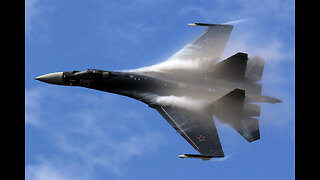 8:58
8:58
Petawawa19
1 year agoRussia's Sukhoi Su-35 ( Flanker-E) Fighter Aircraft
363 -
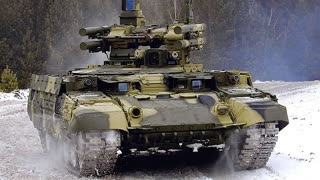 6:23
6:23
Petawawa19
1 year agoRussia's "Terminator" - The New Type of a Fighting Vehicle
322 -
 4:30
4:30
'Merica
1 year agoRussia's SU-57 stealth fighter strikes Ukrainian SU-27 with long-range missile
7 -
 16:06
16:06
Military Technologies, Innovations & Future Weapons
1 year agoSu-75 Checkmate - Russia's INSANE New Fighter Jet! - Better than the F-35? MilTec
8601 -
 4:35
4:35
Military Technologies, Innovations & Future Weapons
1 year agoFinally: Russia upgrades S-70 Okhotnik to 6th generation stealth drone - MilTec by TechSoul
254 -
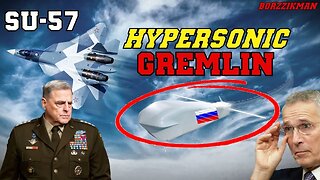 3:52
3:52
TheWarAgainstYou
1 year agoRussia's New Gremlin Hypersonic Missile and 5th Generation Jet Fighter the SU-57
6702 -
 8:08
8:08
Military Technologies, Innovations & Future Weapons
1 year agoAt a distance of 1,500 km, Russia's Su-57 will be able to control 4 unmanned combat aerial vehicles
9481 -
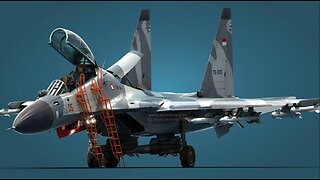 8:10
8:10
Military Technologies, Innovations & Future Weapons
1 year agoThe Next Generation of Su-35 Will be Russia's Next 5th Generation Aircraft Better Than the F-35?
168 -
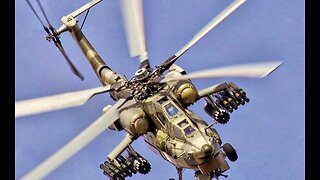 8:16
8:16
Military Technologies, Innovations & Future Weapons
1 year agoRussia's Newest Mi-28NM Helicopter Will Be A Fighter Capable Of Downing Fifth Generation Aircraft
2341 -
 3:27
3:27
Military Technologies, Innovations & Future Weapons
1 year agoRussian Niobium - Nebo-M radar which can detect US F-22 & F-35 fighter jets! MilTec
672